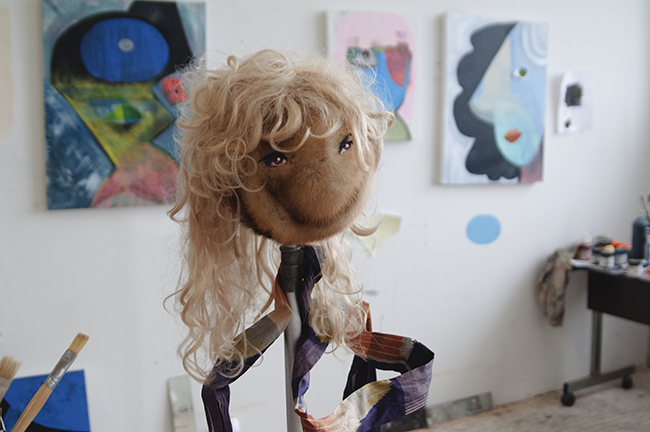Inside\Within is a constantly updating web archive devoted to physically exploring the creative spaces of Chicago's emerging and established artists.
Support for this project was provided by The Propeller Fund, a joint administrated grant from Threewalls and Gallery 400 at The University of Illinois at Chicago.

Search using the field below:
Or display posts from these tags:
3D printing 3D scanning 65 Grand 7/3 Split 8550 Ohio 96 ACRES A+D Gallery ACRE animation Art Institute of Chicago Arts Incubator Arts of Life audio blogging Brain Frame CAKE Carrie Secrist Gallery casting ceramics Chicago Artist Writers Chicago Artists Coalition Chicago Cultural Center Cleve Carney Art Gallery Clutch Gallery Cobalt Studio Coco River Fudge Street collage collection Columbia College Chicago Comfort Station comics conceptual art Contemporary Art Daily Corbett vs. Dempsey Creative Capital DCASE DePaul University design Devening Projects digital art Dock 6 Document drawing Duke University dye Elmhurst Art Museum EXPO Chicago Faber&Faber fashion fiber Field Museum film found objects GIF Graham Foundation graphic design Harold Washington College Hatch Hyde Park Art Center illustration Image File Press Imagists Important Projects ink installation International Museum of Surgical Science Iran Jane-Addams Hull House Museum jewelry Joan Flasch Artist's Book Collection Johalla Projects Julius Caesar Kavi Gupta Links Hall Lloyd Dobler LVL3 Mana Contemporary metalwork Millennium Park Minneapolis College of Art and Design Monique Meloche Museum of Contemporary Art Chicago (MCA) Museum of Contemporary Art Detroit (MOCAD) Museum of Contemporary Photography (MoCP) National Museum of Mexican Art (NMMA) National Resources Defense Council New Capital Northeastern Illinois University Northwestern University Ox-Bow painting paper mache Peanut Gallery peformance Peregrine Program performance photography PLHK poetry portraiture printmaking public art Public Collectors publications Renaissance Society risograph rituals Roman Susan Roots&Culture SAIC screen printing sculpture Sector 2337 Shane Campbell Silver Galleon Press Skowhegan Slow Smart Museum Soberscove Press social practice South of the Tracks Storefront SUB-MISSION Tan n' Loose Temporary Services Terrain Terrain Biennial text-based textile textiles The Banff Centre The Bindery Projects The Cultural Center The Franklin The Hills The Luminary The Packing Plant The Poetry Foundation The Poor Farm The School of the Art Institute of Chicago (SAIC) Threewalls Tracers Trinity College Trubble Club University of Chicago University of Illinois at Chicago (UIC) University of South Florida at Tampa Valerie Carberry Vermont Studio Center video weaving Western Exhibitions wood carving woodwork Yellow Book Yollocalli Arts Reach zinesInside\Within is produced in Chicago, IL.
Get in touch:
contactinsidewithin@gmail.com
Selina Trepp's Solitary Shangri-La
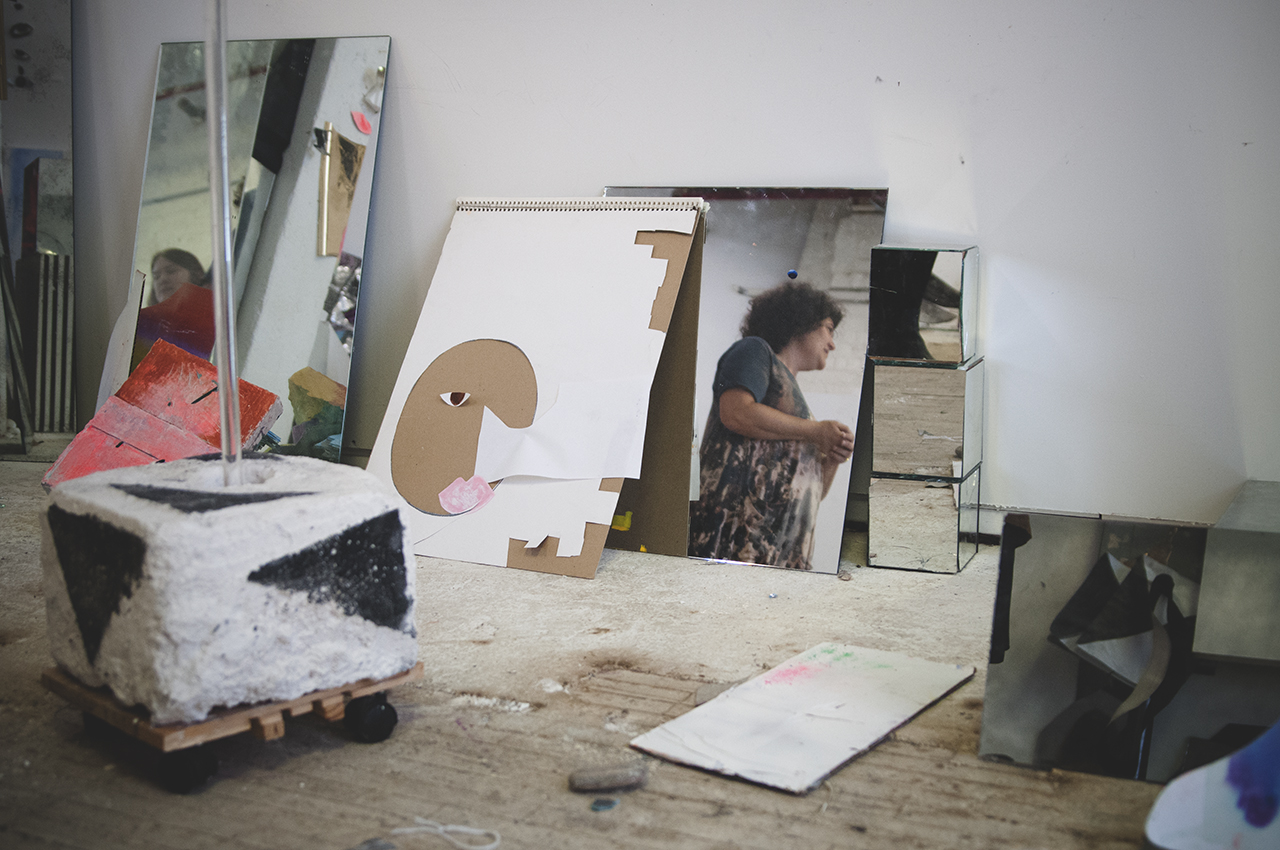
Contorting her body and balancing precariously on stools, Selina transforms her studio still lifes into performative images by capturing herself within strategically placed mirrors. Drawn to the economy of gesture, Selina uses the mirrors to multiply and expand her limbs and the objects they surround, producing scenes that reference her native alpine home. Due to a personal pact she has not bought any new materials for her studio since 2012, forcing her to constantly change her aesthetic as paints and pastels run dry.
I\W: A couple of years ago you made a pact to yourself to not bring any new materials into your studio. Are you still working off of this self-proclaimed rule?
ST: Yep. I have persevered—I haven’t brought any new materials into my studio since October 2012. Recycling and reusing my materials is key to being able to work within this closed system of production. Anytime I make a painting or sculpture and it gets placed into a photo successfully, it can be taken apart and reused for the next photo. In some ways that is the hardest part about the rule. I’ve had to make strict decisions about what is the art that leaves my studio and what is my relationship to the objects that I create to place in the photos. I realize that the quality of the objects that populate my photos directly impact the quality of the resulting photograph. I have to make each object that goes into a photo with the same care as I would if it were to go into an exhibition, even though I know it will be painted over or disassembled once it has performed its part in the photograph.
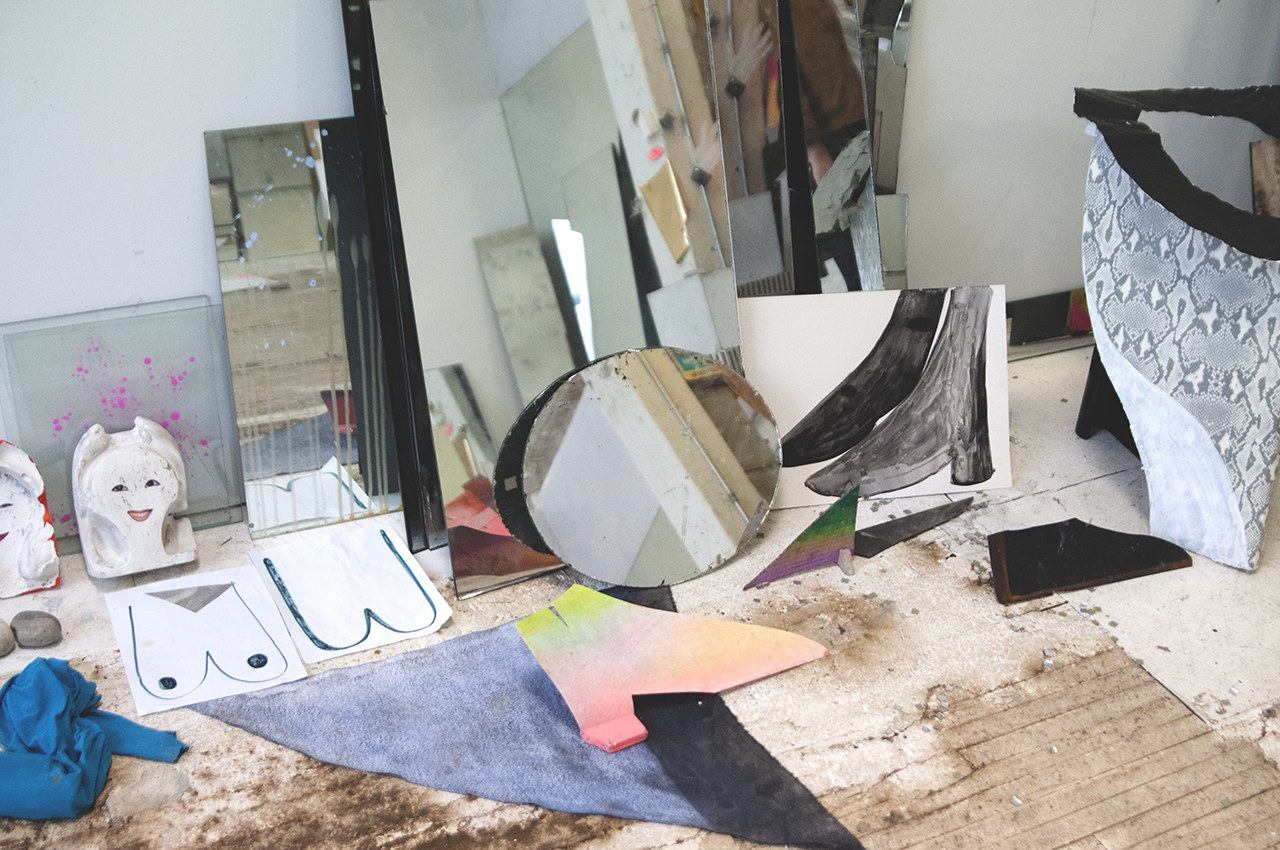
How has that restriction fueled some of your current work? What decisions have you had to make with materials that you weren’t initially attracted to?
I have ten canvases. I have one that I specifically never touch, it remains white. But with all of the other canvases I have textures that are coming up from all the layers of painting that they contain at this point. Now that is part of my aesthetic. The material constraint is forcing me to do things differently than I would have if I were buying materials. My color palette has had to switch because I am now stuck with all of my least favorite colors. My aesthetics have changed as I have run out of my preferred materials. These shoes I have been making lately came out of that dilemma. Working with cardboard and pastels wasn’t my first choice, but it is what I have, and now it has become an important part of my aesthetic. The depleting material reality I live in is simultaneously a problem to work against and to be inspired by.
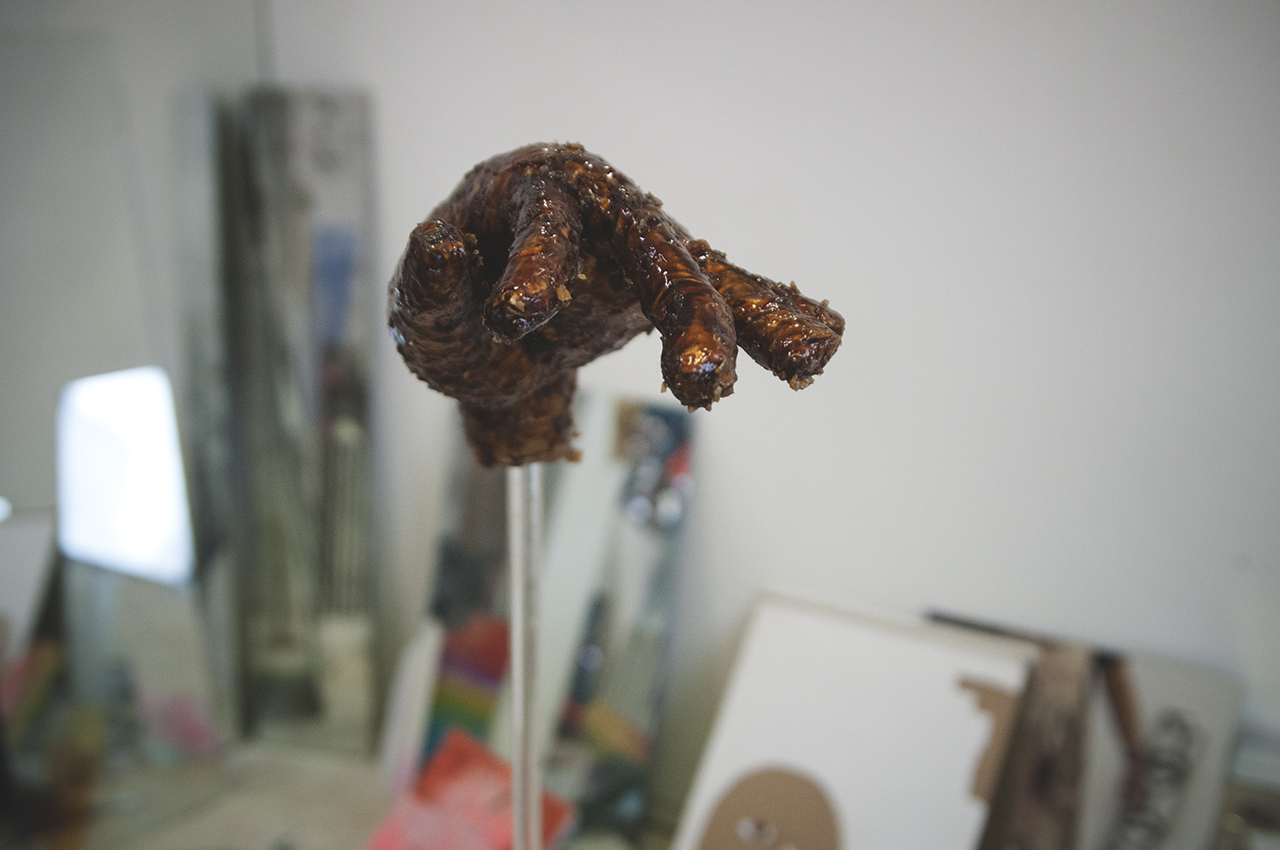
Is your body always present in each photograph you make?
Almost always. I have experimented with not having my body present, but I realized that having my body in there is crucial to the images. My body is what transforms the photograph from a still life into a performance document. Despite it being a highly set up and planned out situation, the photo is also a serendipitous snapshot that captures this one singular moment in time when all the disparate elements that make up my picture come together as one. It turns out that the more physically out of balance I am when I shoot, the more interesting the photos are. I think that might be because of the tension that is transmitted through my body while everything else is so static. Another important aspect of the work is that it isn’t digitally manipulated in any way—no cropping, no picture editing, just the photo as it was taken.
Did you move into photography around the same time you shifted away from outside collaborators?
Pretty much. I was at a point with my work where artmaking started feeling repetitious rather than exploratory. The most exciting thing about making art for me is discovery, and in order to stay engaged, I need to create problems for myself within my work. It is a way of researching through making. What has changed is that I decided to no longer collaborate to create. My work up to this shift had been mostly post-studio and collaborative in nature. I decided instead to become the actor in my work and to dedicate myself to a solitary studio practice. I knew that doing this would be challenging and embarrassing and hard, and that this would help me move forward in my art. If nothing else, I know it is important for me to be embarrassed a bit by my work, to never feel comfortable all the way.
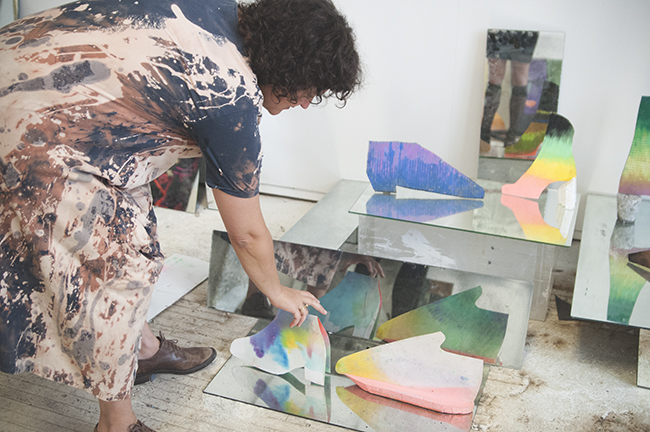
How long do your shoots typically take to get to the right image?
It really varies. I often take hundreds of shots. I usually work on multiple things simultaneously. The photographs are challenging physically because they are all shot handheld, the camera is heavy and I am usually balancing in some impossible position. Sometimes I get lucky and it just works, but other times it takes months to get the picture I want.
With the numerous mirrored surfaces you shoot with do you make sure your objects are fully prepped in front, back, and sides?
Yes, and I continuously work on the objects as I am shooting. A setup is never set until I have the shot that works. I shoot, look, and rework things as needed. The tableaux is constantly changing. A lot of what I consider when I make is about my larger quest of applying my ideas about economy and ecology to all aspects of my making and being. I am always thinking about how to make the most with as little as possible. Mirrors are very helpful for achieving that, they multiply and expand things and space. I constantly think about the economy of my gestures, how much image information do I give and how much do I make my viewer imagine. I want to give the viewers these little spots of visual information that they have to piece together into one full piece in their own mind. I want the viewer to explore my work. That quality is something I really like about installation and that I took with me when I shifted from mostly working with installations to photography. When you are in an installation you never see the whole thing, it surrounds you. You are putting an impression of the installation together in your mind based upon your exploration of the space.
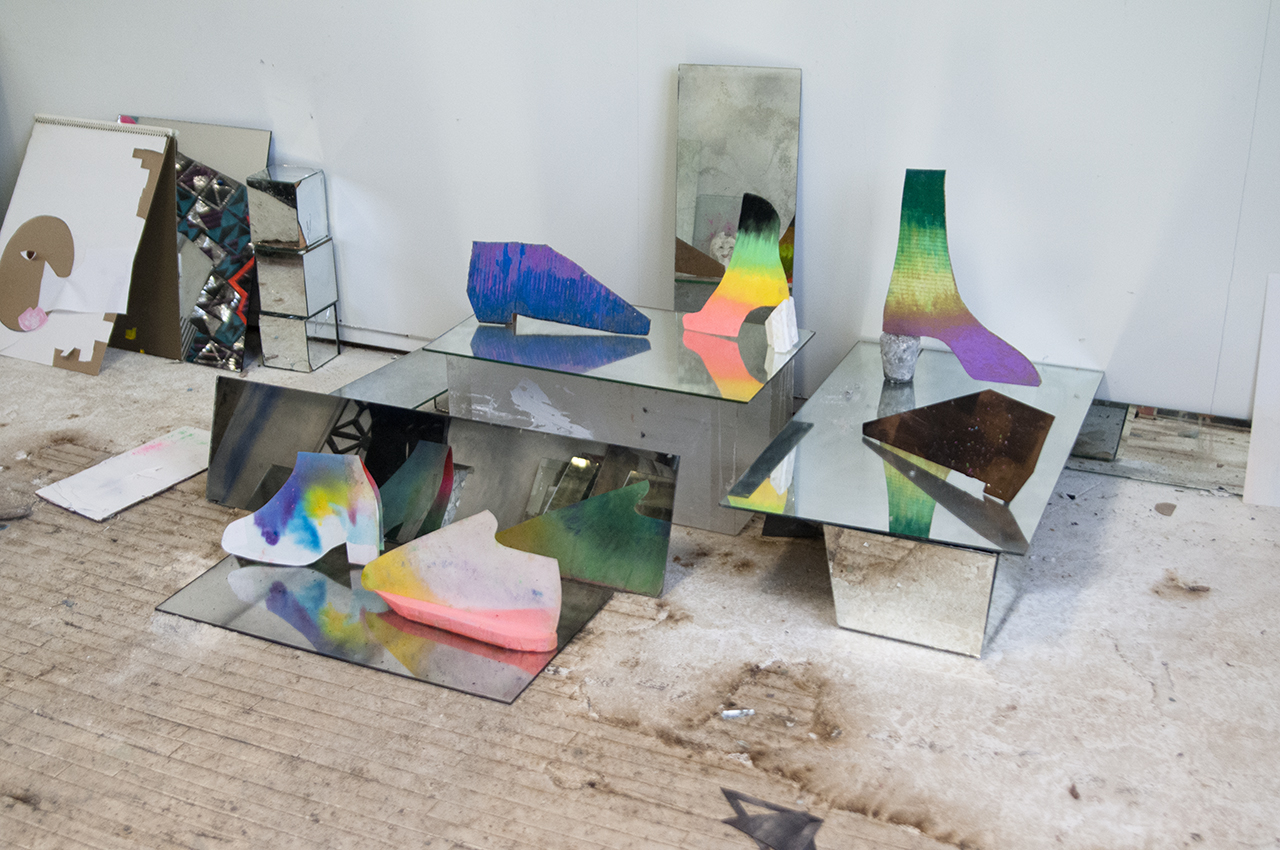
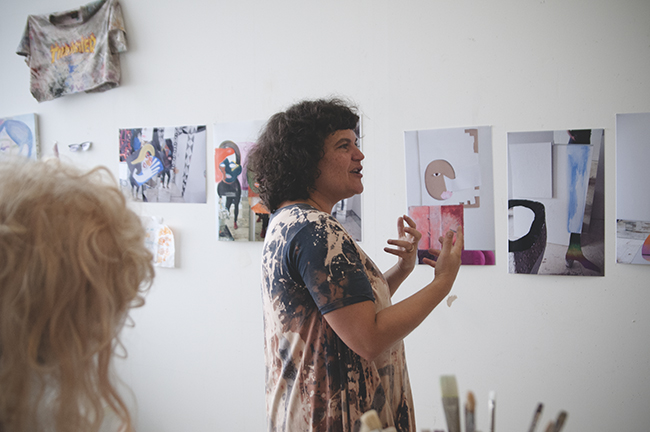
Where are your works intended to be imagined or set?
Most of the work I made in the past 3 years is set in Val Verità, a fictional town in the Swiss Alps. All the pictures come out of my grand narrative about a horse race that takes place on a frozen lake in Val Verità once a year. The reason I am interested in horse races and this alpine situation specifically is the exoticism of the Alps and the stratification that the horserace brings to this town. I’m Swiss, and the location and many of the visual elements are based on memories from my childhood, but this place and this race don’t actually exist. My pictures depict the people who work in the stables, the jockeys, the owners, those that bet, the audience, all that comes with this race. This is a high-low situation, a point of connection for many different kinds of lives. After spending the first years of working with the narrative on the events of the day, I have now shifted to the events that happen after the race at night. I am currently working on pictures that depict what is going on in the ladies room at Club Shangri La, the local nightclub.

How do you typically present your work?
I am thinking about and testing out different ways of thinking about exhibition altogether which is one of the reasons that I shoot digitally and not analog. Shooting digitally results in a file, and I am very interested the collapsibility and expandability of digital medium. To test out some of my ideas I decided to send digital files and have a gallery print print posters for a recent show. Working like this takes into account that the work is digital and what it can do. The drawback of course is that I can’t control the print, and that it takes away from the preciousness of the object itself. I don’t know if it is something that I am going to continuously do. I am currently thinking through the implications of this mode of presentation. If I were to push this idea further, I think it might make more sense to just project my images to fully realize their digital quality.
